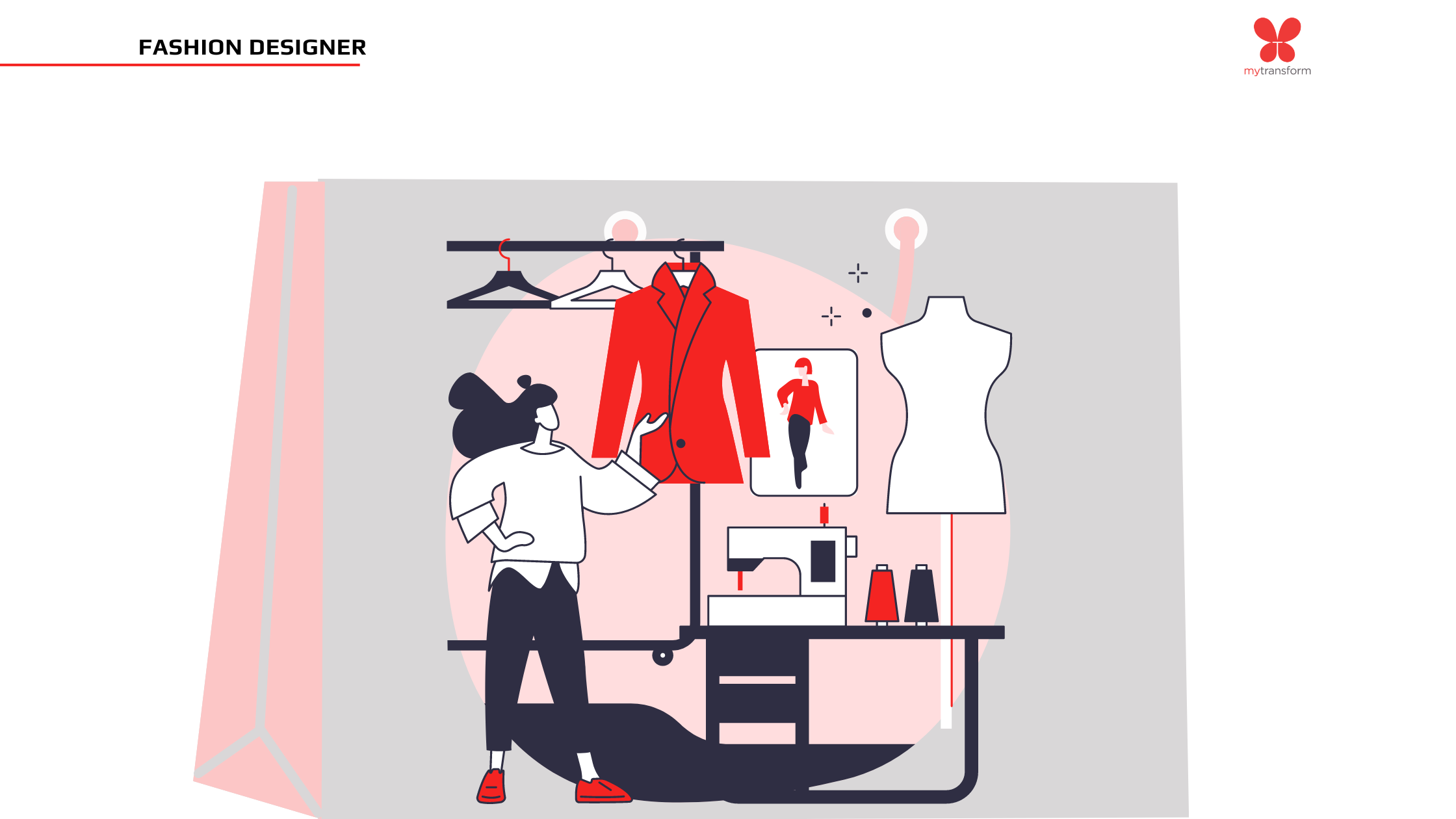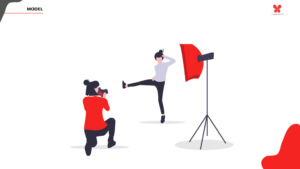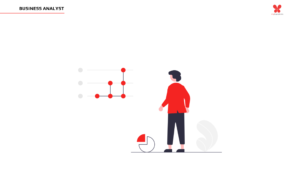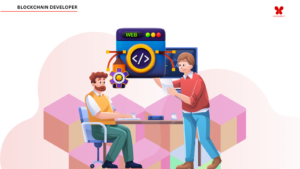
A perception has been developed around the word Fashion which revolves around glamor, cosmetics, designer clothes, fashion show, etc. but in reality, the work of a fashion Designer exceeds all these ideas.
If you are wondering How to become a Fashion Designer in India? we have put together an article to give a complete guide about taking up a career in fashion designing after graduation.
A lot of work in the fashion industry happens behind the screen and on stage. The career requires a creative mindset to not just catch up with the trends but also be able to create one.
The career is not as glamorous as the perceived image but it is the brains behind the fashion Industry. The industry is innovative, creative and a market driver of the textile industry.
You will find all the information about fashion designing like how fashion designer works, fashion designer qualifications, etc.
Who is a Fashion Designer?
Employing their creative flair and technical perspective, professional fashion designers design new and original apparel designs. A Fashion Designer takes inspiration from the world to create new designs in accordance with prevailing trends.
The designer will research current fashion trends and forecast the market trends and demands.
A Fashion Designer will decide on the material quality, fabrics, patterns, and designs. Taking into account different design aspects, a Fashion designer works as part of a team with different expertise to develop creative designs.
Once getting to know and understand different expertise, a Fashion Designer can choose a specialization to work on.
Why Do You Want to Become a Fashion Designer?
Becoming a fashion designer is a promising career option. It is a creative and adventurous option that equips the professional with an understanding of the social lifestyle and fashion creation. Here are the reasons to become a Fashion Designer.
-
- The fashion designer career opens up a lot of opportunities.
-
- One can unleash their creativity in fashion design.
-
- Have a challenging and innovative career.
-
- Build a career with formal education
Responsibilities of a Fashion Designer
Every profession has a set of responsibilities. Alike is a Fashion Designer’s day-to-day responsibilities and are
-
- Visit different manufacturers, exhibitions, and trade shows to understand the fabric.
-
- Keep a market watch on changing trends and design apparel to keep up with the trend.
-
- Create theme-based collections
-
- Create designs using Computer Aided Software (CAD) Software.
-
- Work on designing prototypes along with fellow designers.
-
- Present ideas to creative directors in fashion and trade shows.
-
- Market designs to apparel distributors and retailers.
-
- Oversee the production of designs.
-
- Adapt existing designs for production.
Types of Fashion Designers
Fashion designers after working in common to understand the different roles involved in the fashion designing process can choose a specialization to work on and master it. Different types of fashion designers are:
1. Apparel Designers
An apparel designer focuses on designing clothes for different customer segments. Different people prefer different clothing depending on various parameters like climate, region, age, gender, etc. Apparel designers design a variety of clothes from uniforms to luxurious designer clothes. Apparel designers have often divided into various specialties in the clothing industry.
2. Ready-to-wear Designers
These designers create outfits in standardized sizes that fit a wider segment of people. They design outfits with standard materials and sizes and manufacture in small segments of different sizes. These are ready-made clothes available for picking from the store or placing an order on a website.
3. Footwear Designer
They create footwear designs such as shoes, sneakers, flats, high heels, formal shoes, etc. Footwear designers can further get specialization in athletic and formal footwear. They even collaborate with different apparel designers to match customized and ready-made designs.
4. Accessory Designers
Fashion is not just about clothes. Accessories add to the fashion. It may be jewelry, handbags, hats, eyewear, scarves, etc. Accessory designers create fashionable designs of accessories that aren’t part of general clothing. They are even customized for different boutique designs.
5. Sportwear Designers
These designers cater to athletes and sports persons. They are different from casual clothing which offers more comfortable and durable material. They are designed to be easily stretchable and be able to absorb moisture and sweat. Creating durable clothes, sportswear designers possess knowledge of different textile material, their quality, and their long-lasting ability.
6. Eco-fashion Designers
They create garment designs using eco-friendly materials to make them stylish, trendy, and affordable. The situation is not always using sustainable materials but also using recycled materials such as plastics in athletic shoes. The products are designed to target an environmentally friendly and socially conscious audience.
7. Occasion-wear Designers
They concentrate on the luxury sector and are most often privately customized labels designed for individual body personalities. Occasion wear designers typically design apparel and accessories for events which include suits, tuxedos, gowns, wedding dresses, etc. They usually run their own boutique catering and are self-employed or in a small business.
8. Childrens-wear Designers
They design apparel and accessories for kids of all ages. They design clothes of sizes that fit infants to teenagers. They even use durable materials to hold the elastic movements of children.
Skills Required for a Fashion Designer
Like every other profession, a Fashion Designer must possess a certain set of skills to be good and become the best at their profession. Here are the skills needed for a Fashion Designer.
-
- Leadership skills
-
- Entrepreneurial skills
-
- Research skills
-
- Management skills
-
- Analytical skills
-
- Decision-making skills
-
- Understanding current fashion trends
-
- Employ best and efficient practices.
Eligibility Criteria for a Fashion Designer
Fashion design career aspirants need to clear the 12th standard in any stream to pursue a fashion designer education.
After +2, the candidate must undergo graduation in fashion design through a bachelor’s degree. However, one has to undergo an admission process with few having their own entrance exams as well.
Having a bachelor’s degree in fashion design will open up the opportunities in fashion and textile industry.
How to Become a Fashion Designer? Step-by-step Guide
In rare cases, education in fashion may not be necessary to be a fashion designer provided having experience in related work.
However, if you want to start from scratch, the path to becoming a Fashion Designer is straightforward. There are multiple ways to start the journey with the same destination. Here’s the step-by-step process to become a fashion designer.
-
- Pass 12th std. or +2 with good marks in any stream.
-
- Take a graduate course in fashion Designing like B.Sc in Fashion and Apparel Design.
-
- Alternatively, enroll for a diploma in Fashion Design.
-
- After completion of the Bachelor’s program, you can continue your education with a Master’s degree in fashion Design.
-
- The next and final step is to get placed in a related company.
To specialize in a role, understand different aspects of the job, and learn practically to fixate on a fashion industry specialization.
Top Fashion Designing Colleges in India
-
- Indian Institute of Fashion Technology, Bangalore
-
- National Institute of Fashion Technology, New Delhi
-
- Vogue Institute of Fashion Technology, Bangalore
-
- Army Institute of Fashion and Design, Bangalore
-
- Symbiosis Institute of Design, Pune
-
- JD Institute of Fashion Technology, Bangalore
-
- National Institute of Fashion Technology, Mumbai
-
- Pearl Academy, New Delhi
-
- International Institute of Fashion Design, Navi Mumbai
-
- Amity Institute of Fashion Technology, Noida
Scope of a Fashion Designer
Completing education in Fashion Designers opens up a large number of roles in the fashion design industry. If you don’t wish to work for a company, you can also start your own fashion brands across products.
The scope of a Fashion Designer can be molded into different job roles and some of them are mentioned below.
-
- Visual Merchandiser
-
- Fashion Merchandiser
-
- Quality Executive
-
- Retail Manager
-
- Brand Manager
-
- Ecommerce and Social Media Manager
-
- Brand Consultant
-
- Garment Export Executive
-
- Production Manager
-
- Textile Industrial Engineering Executive
Fashion Designer Salary
The entry-level salary in fashion designing is 25k/month and can extend upto Rs.50k/month with 2 to 3 years depending on the specialization you pursue. There are many factors that decide a fashion designer salary. They are
-
- Certification/Diploma/Degree in Fashion Designing
-
- The recruiting company and the brand.
-
- Skills and experience
-
- Changing fashion market dynamics
Summary
-
- Fashion designing is a profession of designing clothes and apparel by applying design, aesthetics, clothing construction, etc.
-
- Fashion designers have a long list of responsibilities right from drawing the right cloth design to ensure the production line meets the quality and design standards.
-
- Starting a career in fashion design can start after completing 10th standard through diploma and education can pursued till master’s program in fashion design.
-
- India is a big market and has huge export potential for clothing and apparel industries which gives huge business and employment opportunity in fashion design and textile industry.
-
- Even though the educational institutions offering fashion design courses are concentrated in urban locations, the fee is less compared to other competitive roles and the opportunity to get to work can be early compared to other formal education streams.
Frequently Asked Questions
Yes, a Diploma in Fashion Designing can be pursued soon after the 10th standard which is usually a 1-year or 3-year course.
Pursuing a fashion designer career is not hard, however, there is a need to be creative and understand the market fashion trends.
The starting salary in the industry is Rs.25000/- and can go as high as Rs.50000/- within 2-3 years.
Nike is the biggest apparel brand in the World. There are many other fashion designers as well who cater to a segment of customers.
Fashion design is a creative thought process. The academic path is a straightforward way to learn different aspects of fashion design.
There are many institutions in India that are mainly concentrated in urban areas offering Diploma and undergraduate courses in Fashion Design.
No, Fashion Designer doesn’t make clothes but creates designs for apparel and accessories.
Fashion design is a creative field that requires constant inspiration to build fashion themes and trends and pursuing fashion designing is worth it.
All the fields have equal value but one needs to work in the industry they specialize in like sportswear companies need experts in respective designs.
A fashion designer generates creatives and designs of apparel and accessories, and study market trends, and selects fabrics, styles, patterns, etc to design clothing.




